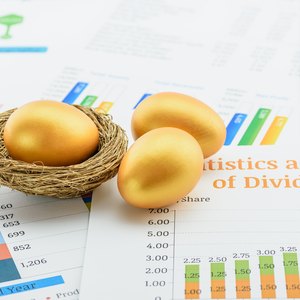
Investors would love a low-risk investment with a high return. But these can be hard to find. On the other hand, a well-diversified portfolio helps balance risk to optimize potential returns. Modern portfolio theory holds that investing in more than one stock brings the benefits of diversification, but diversification goes beyond evaluating the risk/reward of a singular stock.
Understanding the Concept of Diversification
Diversification is a risk-management technique that uses a wide assortment of investments in a singular portfolio. This is to attempt to gain higher returns with the lowest possible risk. An investor's diversification might balance an unsystematic risk their portfolio.
For instance, the positive returns on some investments offset the poor performance of other investments. However, diversification can only be beneficial if the underlying investments do not perfectly correlate.
A well-diversified portfolio contains roughly 25-30 stocks that yield the most cost-effective level of risk reduction. However, many investors do not have the money to invest in 20 or more securities. Mutual funds and exchange-traded funds hold hundreds of stocks, allowing the investor a cost-efficient way to diversify. Furthermore, adding foreign investments can further diversification in case the U.S. economy declines.
Considering the Risk/Reward Ratio
A well-diversified portfolio it must be efficient. Modern portfolio theory indicates "for every level of return, there is one portfolio that offers the lowest possible risk, and for every level of risk, there is a portfolio that offers the highest return."
The risk/reward ratio is used to compare expected returns from an investment to the amount of risk taken to receive these returns. This ratio is calculated by dividing the amount of profit expected when the investment is closed by the potential loss if the price moves in an unexpected direction.
A diverse portfolio balances risk. Each stock within the portfolio contributes little to the overall risk. The investor benefits from a diverse blend of investments instead of individual investments.
Finding Diversified Funds
Exchange-traded funds, or ETFs, and mutual funds offer specific diversification. ETFs and mutual funds contain hundreds of stocks according to the funds' investment objectives. For example, an ETF or mutual fund can be sector-specific and hold energy stocks. It can be even more specific by containing only clean-energy companies, or only coal companies.
Market-capitalization diversification is achievable buy owning large-cap, mid-cap or small-cap funds. These market cap funds can also contain growth companies, or a blend of all three market caps. These are truly versatile tools an investor can use to their advantage.
Read More: Choose the Right ETFs for Your Portfolio
Exploring Examples of Diversified Portfolios
Examples of a well-diversified portfolio can be endless and unique to each investor. An investor's portfolio can include technology and energy stocks, which include common and preferred shares. A large-cap mutual fund and a high-dividend ETF can be added. Treasury bonds and bank certificates of deposit would add low-risk, low-return investments.
One way to diversify is to balance diversified stock portfolio sectors, which means balancing cyclical sectors with non-cyclical sectors. Cyclical sectors are those – including retail, consumer discretionary and automotive – that increase in a strong economy but do poorly in a weak economy. Non-cyclical sectors, such as health care and utilities, do well in a weak economy. Non-cyclical sector demand remains consistent, thus cyclical and non-cyclical sectors balance each other out.
It's recommended to consult your financial adviser to help you achieve the right diversification for your investment goals.
References
Writer Bio
Christopher Lemieux began writing in 2005 for various online publications. After achieving a Bachelor of Science in finance, Lemieux became certified in finance management at Cornell University.

